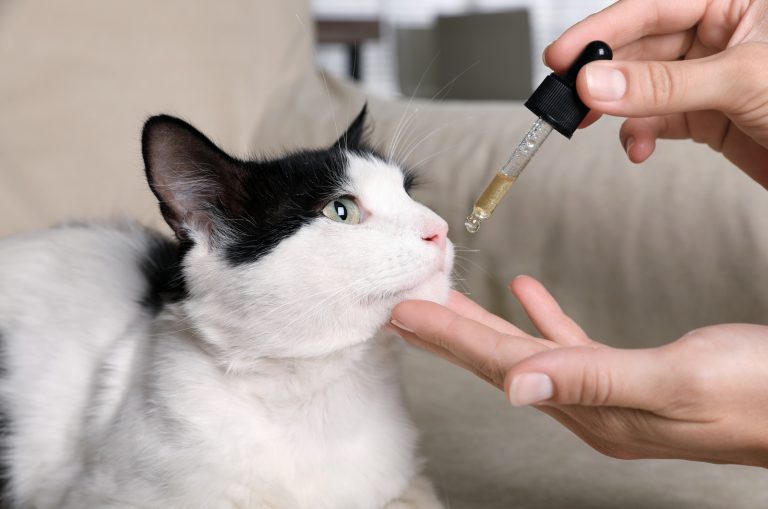11 Effective Tips For Taming A Feral Kitten
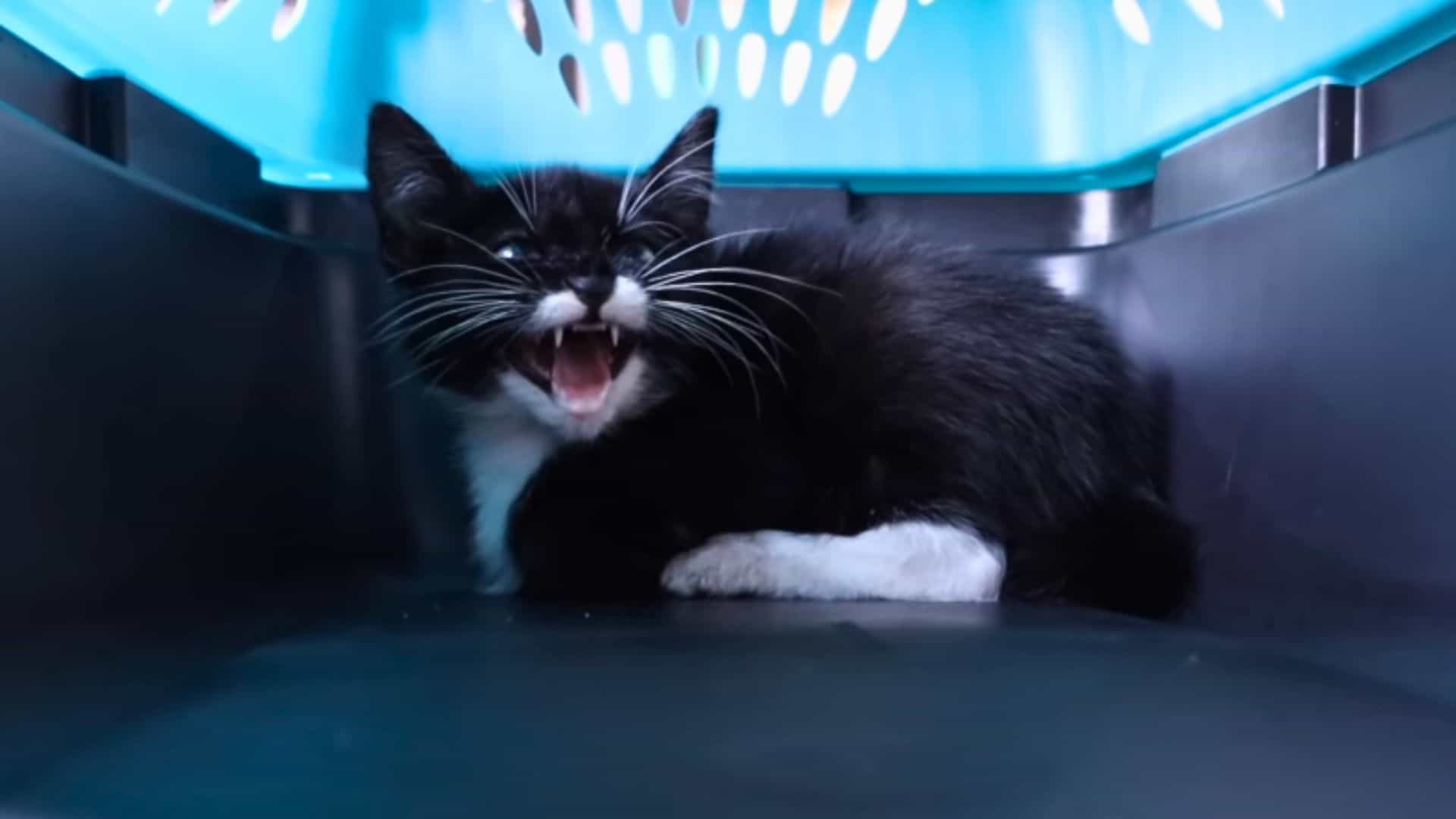
If you’ve just come across a feral kitten on your way home and are unsure what to do with it, you’re in luck because I’m here to help you out!
Taking care of kittens, especially those with feral backgrounds can be challenging. Since they’re not naturally inclined to like humans, socializing with us doesn’t come as easily as we might expect.
In the world of felines, socialization is a learned behavior. If the kittens aren’t exposed to humans from an early age, they’re likely to become feral and unfriendly.
However, this doesn’t mean that feral kittens are a lost cause. If you’ve stumbled upon a feral fluff and want to socialize it, here are 11 useful tips on how to successfully achieve it – courtesy of Hannah Shaw, a.k.a. the Kitten Lady.
TIP 1: Gear Up For Safety!

There’s a common misconception that kittens, being small and adorable, can’t really harm humans. But let me tell you, they absolutely can!
So, during your first encounter with a feral kitten, make sure to put on your gloves. Young feral felines are naturally very scared, especially if they’re cornered by a big, scary human.
In that situation, their natural reflex is almost always to hiss, scratch, or even bite.
To avoid getting hurt, it’s essential to have a pair of protective gloves on. Better to be safe than sorry, right?
If the feral kitten is already in a carrier, be sure to remove the top for easy access. The kitten won’t feel as cornered, and it’ll be a lot easier for you to get the fluffer out.
Keep in mind that any loud sounds or sudden movement will be really scary for the kitten. So, just be gentle and cautious!
TIP 2: Keep The Kitten In A Confined Space
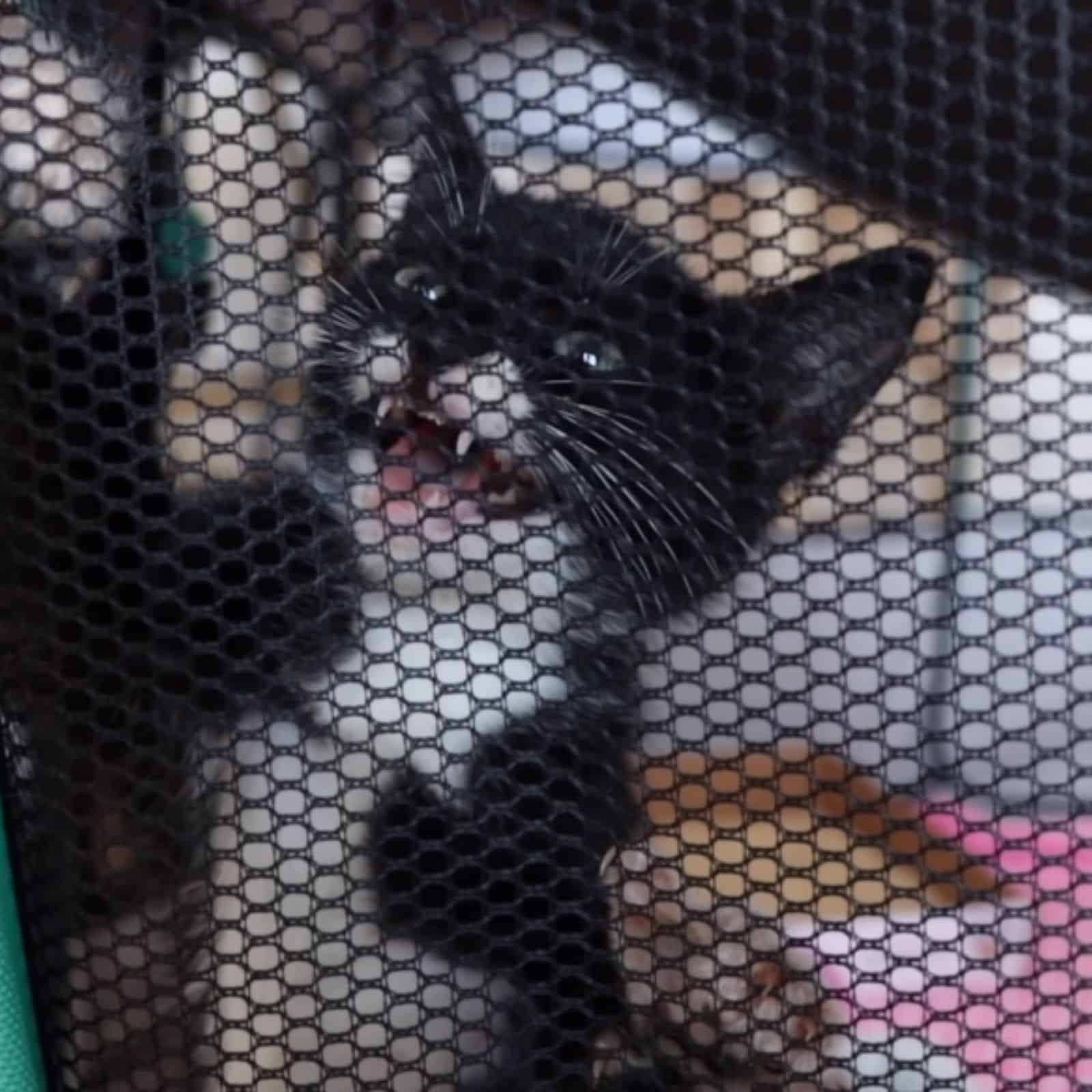
Once out of their carrier, the kitten should be transferred to a playpen that could preferably be zipped up. That would be their residence for the next couple of days.
Keeping a kitten inside a confined space is important because it ensures the kitten stays safe and put. It’s crucial that the kitten and their enclosure are located in a room where you spend most of your time, so they can get used to your presence a lot faster.
Remember, a spicy kitty should be an enclosed kitty, at least in the beginning stages of their socialization process. You really shouldn’t let your feral fluff roam freely around your home, cause they’ll most definitely seek a place to hide from you.
TIP 3: Understand The Kitten Socialization Window
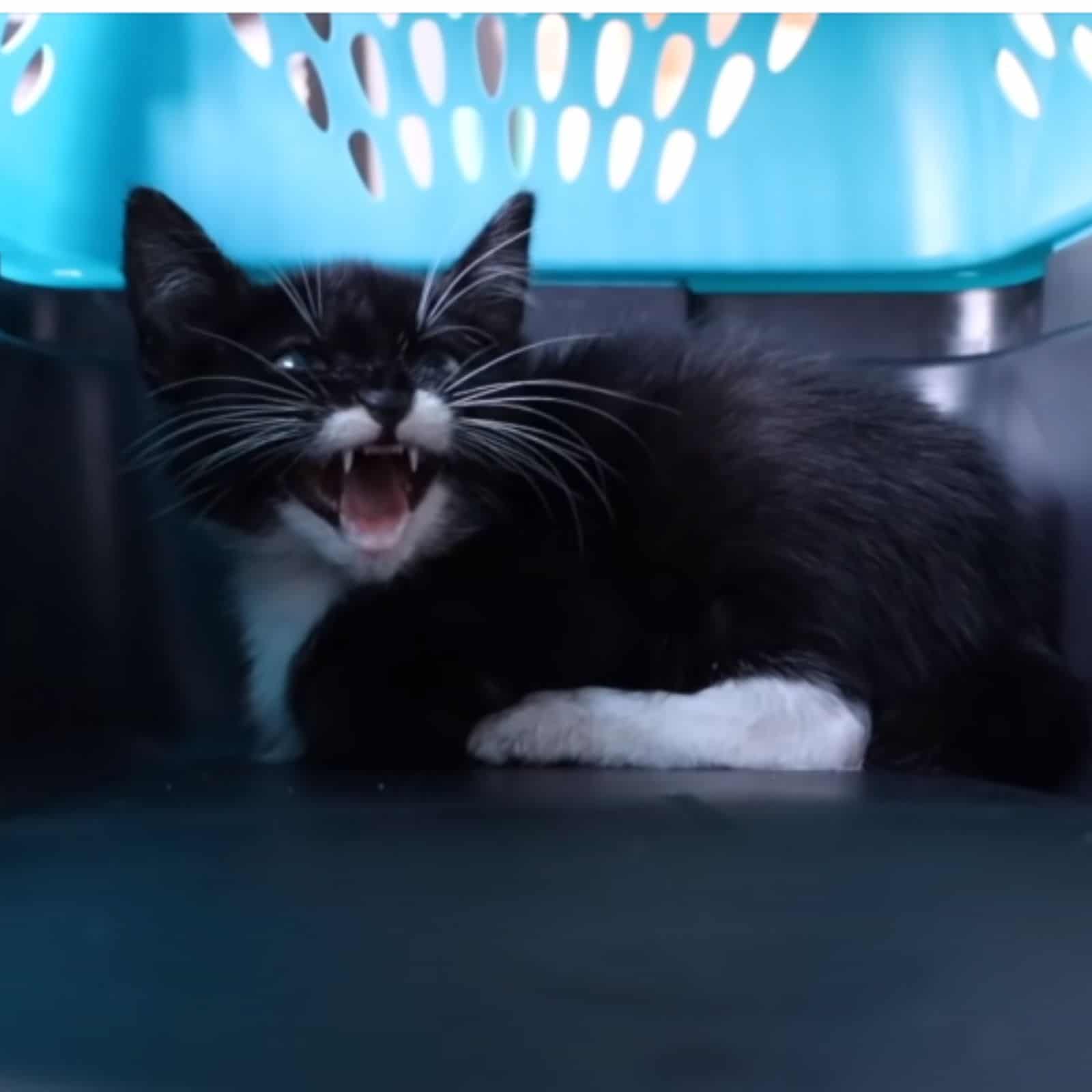
The kitten socialization window is perhaps the most crucial aspect to master in the feral kitten socialization process. Before you start working with your rescued feral fluff, ensure they’re at an age when they’re likely to warm up to you.
The prime time for kittens to interact with humans is between 5 and 12 weeks of age, as they become less dependent on their mom and start weaning onto wet food.
During this period, they are biologically predisposed to accept change and seek new adventures, making it easier for them to warm up to humans.
If your feral kitten is of this age, know that they’re looking for the next meal ticket. Make sure you swoop in and ensure your newcomer associates you with food – and you two will be best buddies in no time!
TIP 4: Avoid Free-Feeding At All Costs!

Free-feeding is a term used to describe a situation when you as a cat parent “freely” give your fluff food to eat whenever they want. While it may seem super kind, it’s actually not doing you any favors.
Now, put yourself in your kitten’s shoes! In their little world, the food they’ve stumbled upon is the food they’ve found on their own. In other words, they don’t link you to the meal they just enjoyed but rather see it as something they’ve successfully hunted.
When trying to befriend a feral kitten, consider meal times as socialization opportunities. Every time the kitten needs to eat, make sure you’re there, gently pushing their boundaries a bit more each time.
TIP 5: Acclimate The Kitten To The Sound Of Your Voice
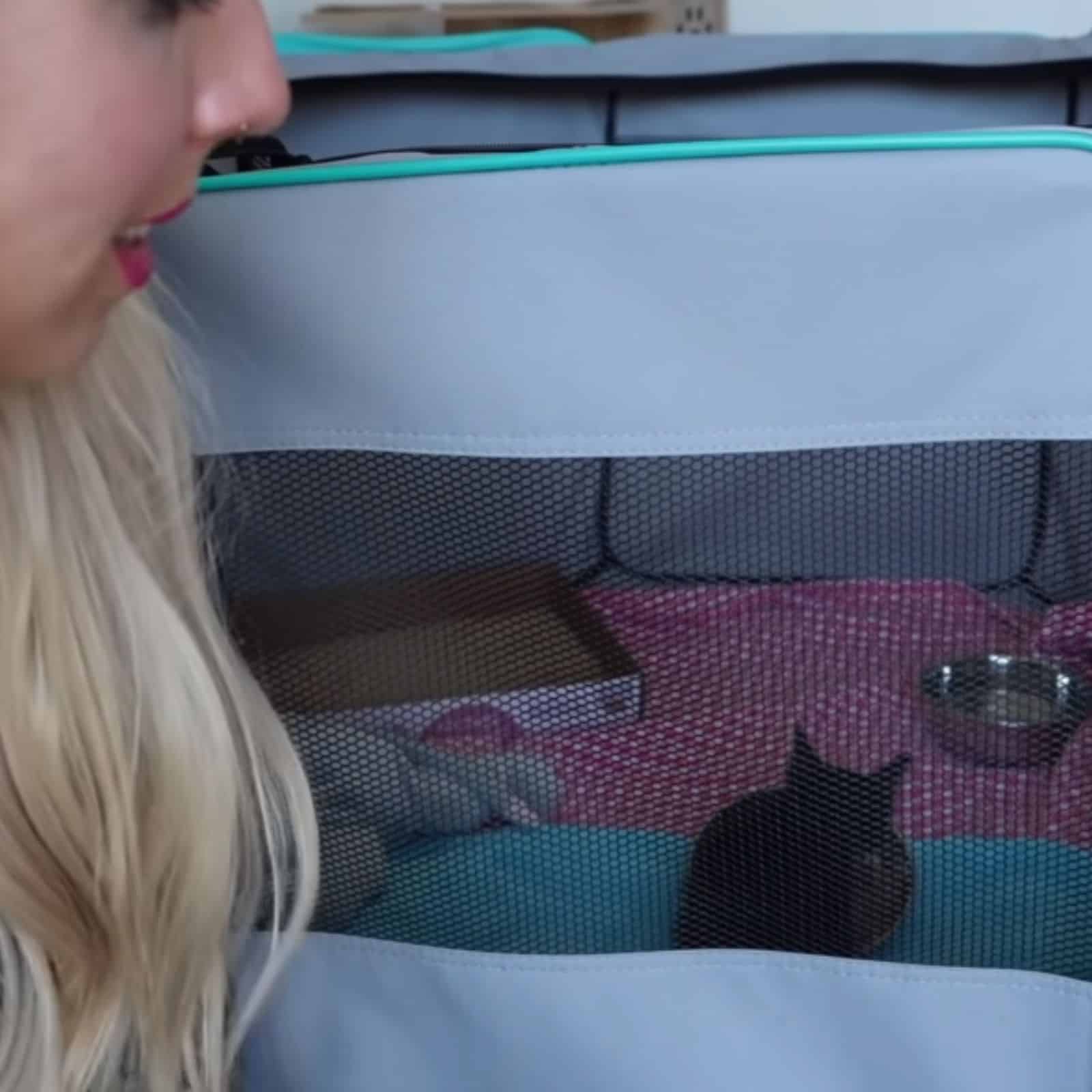
As you watch your feral kitten eat, make sure you talk to them all the time. You can discuss your day, what you had for breakfast, that coworker who just got under your skin, or even any love troubles you might be facing.
The topic doesn’t have to be anything specific; the key is getting the kitten accustomed to the sound of your voice.
If you find yourself with nothing to talk about or feel a bit awkward talking to yourself, you can always read a book, newspaper, or an online article right in front of your fluff.
Remember, most feral cats have never heard a human speak before. Therefore, this step is super important!
TIP 6: Acclimate The Kitten To Your Touch
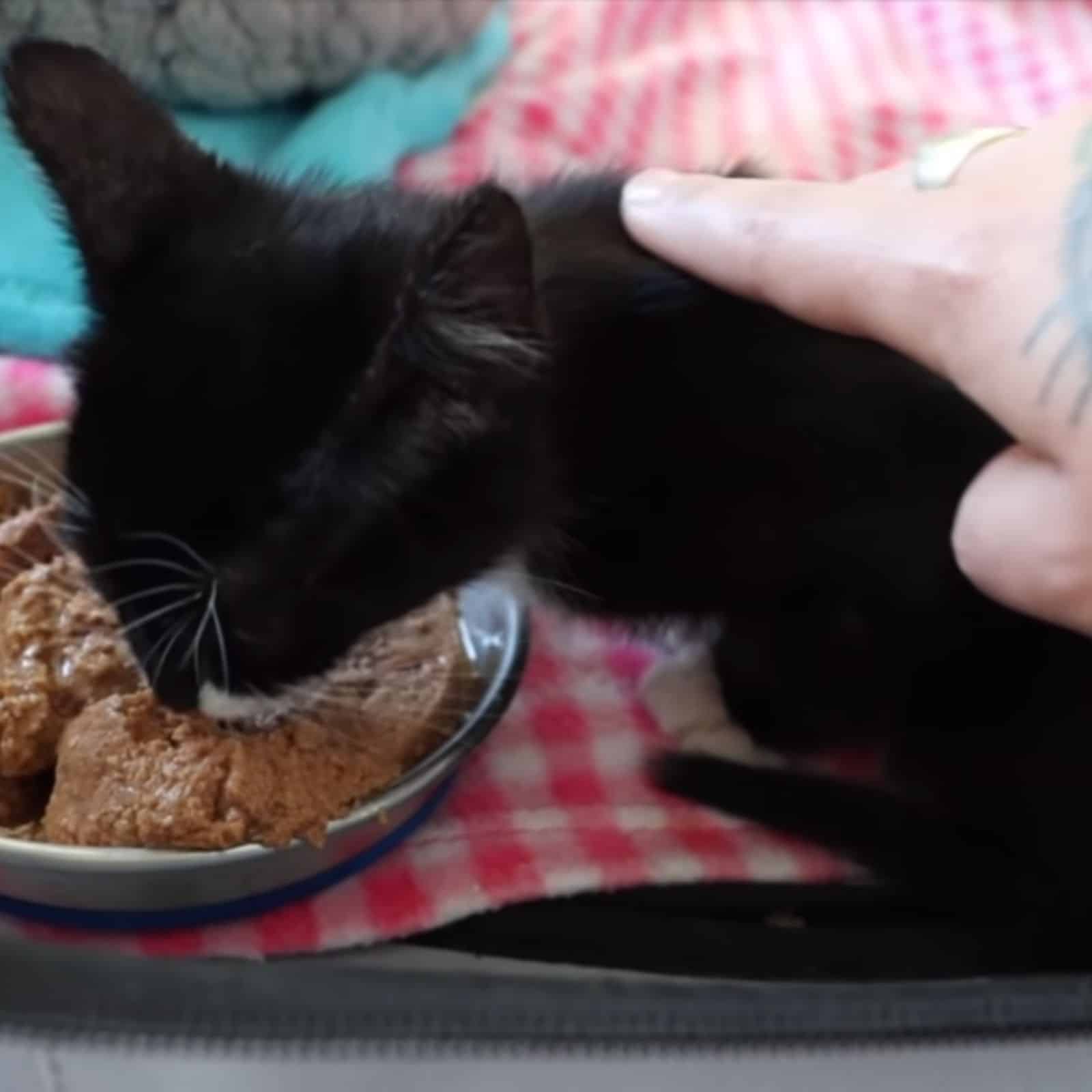
Once your kitten gets used to the idea that they’re now living indoors with a human looking out for them, they’ll start connecting the dots.
If you continue spending time with them during meals, discussing your day, the kitten will soon understand you’re not some bad guy out to harm them.
That’s when you can introduce some gentle pets. You don’t want to overwhelm the kitten and push their boundaries too far. A soft pat on their head or back will do the trick.
Remember, the aim here is to get them used to your touch so you two can have a very cuddly future together.
TIP 7: Slowly Introduce Hand Feeding

When you sense that your feral fluff is becoming less spicy, you can start incorporating hand feeding into the routine.
This will enhance the kitten’s sense of reliance on you as their caregiver and contribute to building trust between you two.
TIP 8: Acclimate The Kitten To Being Lifted
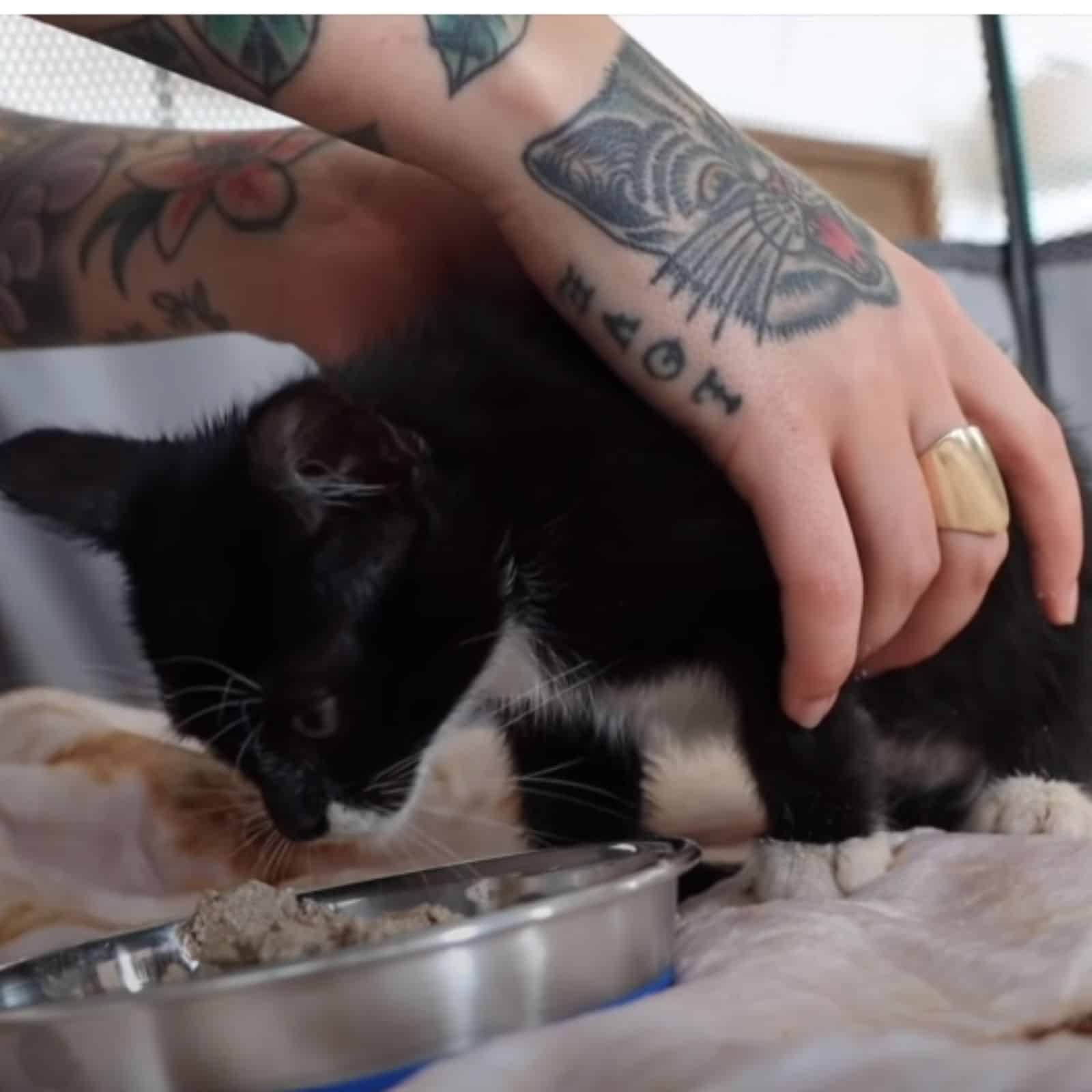
Once your kitten becomes comfortable eating from your hands, you can gradually start practicing lifting them while they’re enjoying their meal. The key is to take it slow and steady, paying attention to your fluff’s needs and preferences.
If the kitten shows signs of distress, becomes upset, or refuses to resume eating after you put them back down, take it as a signal to stop and give them more time to adjust to your touch.
It’s a gradual process, and the progress may be subtle, but rest assured that soon enough, you’ll be able to lift your new feline buddy fully and carry them around your home.
TIP 9: Slowly Introduce Petting While Eating

When your kitten becomes fully accustomed to your touch, experiment with petting some of their favorite spots, such as the face, chest, or lower back.
If you’re fortunate, this may be the moment when you hear your kitty’s first purrs.
TIP 10: Encourage Constant Cuddles
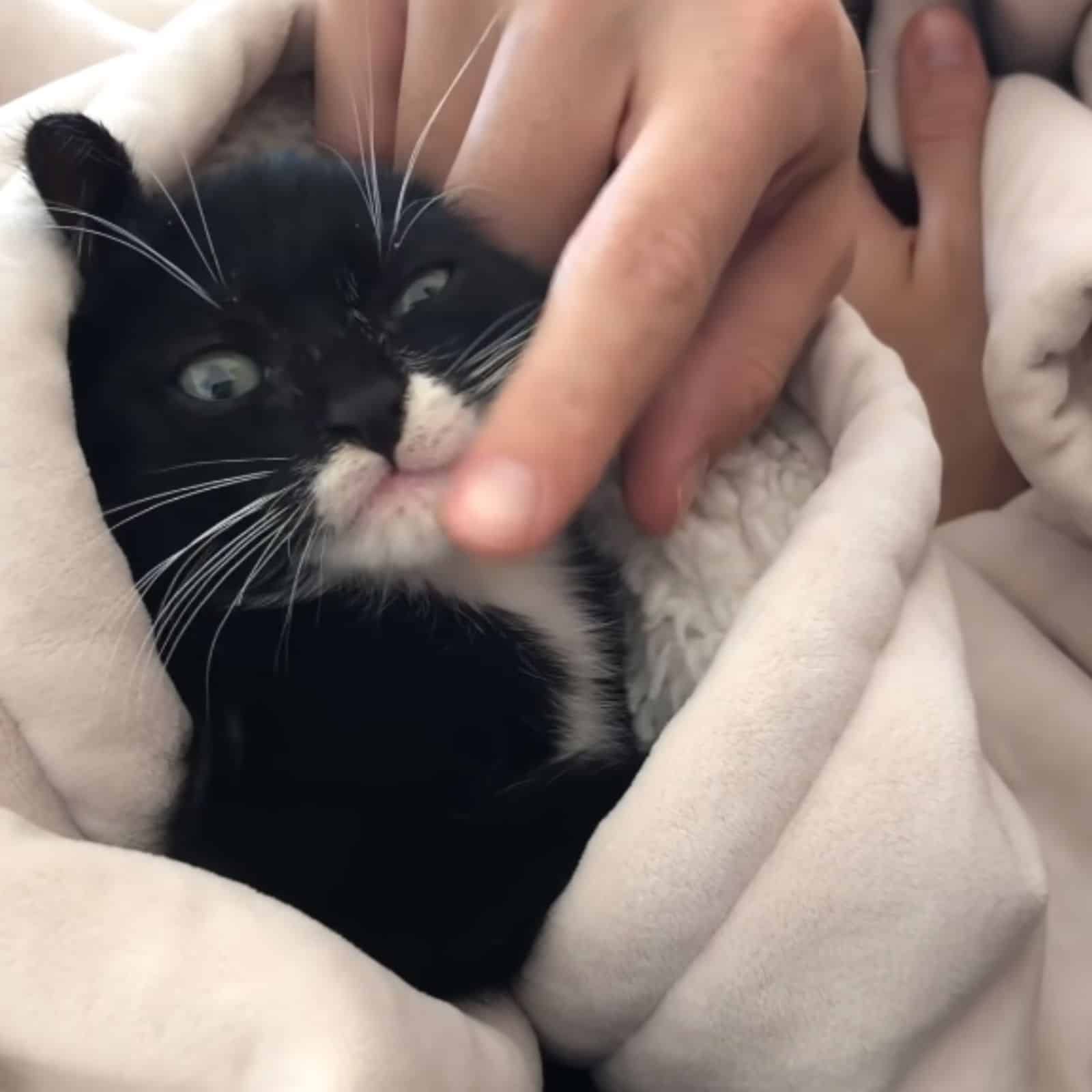
All the steps mentioned above unfold over the course of several days, the duration depending on how cautious your feral kitten is.
Once you start noticing improvements in your kitty’s behavior, it’s time to promote continuous cuddle sessions.
Dedicate as much time as possible to your kitten. Cuddle with them, hold them, kiss them – the sky is the limit!
The kitten might be puzzled at first, but over time, it’ll all make much more sense to them. The key thing here is to keep the kitten close at all times!
TIP 11: Encourage Playtime
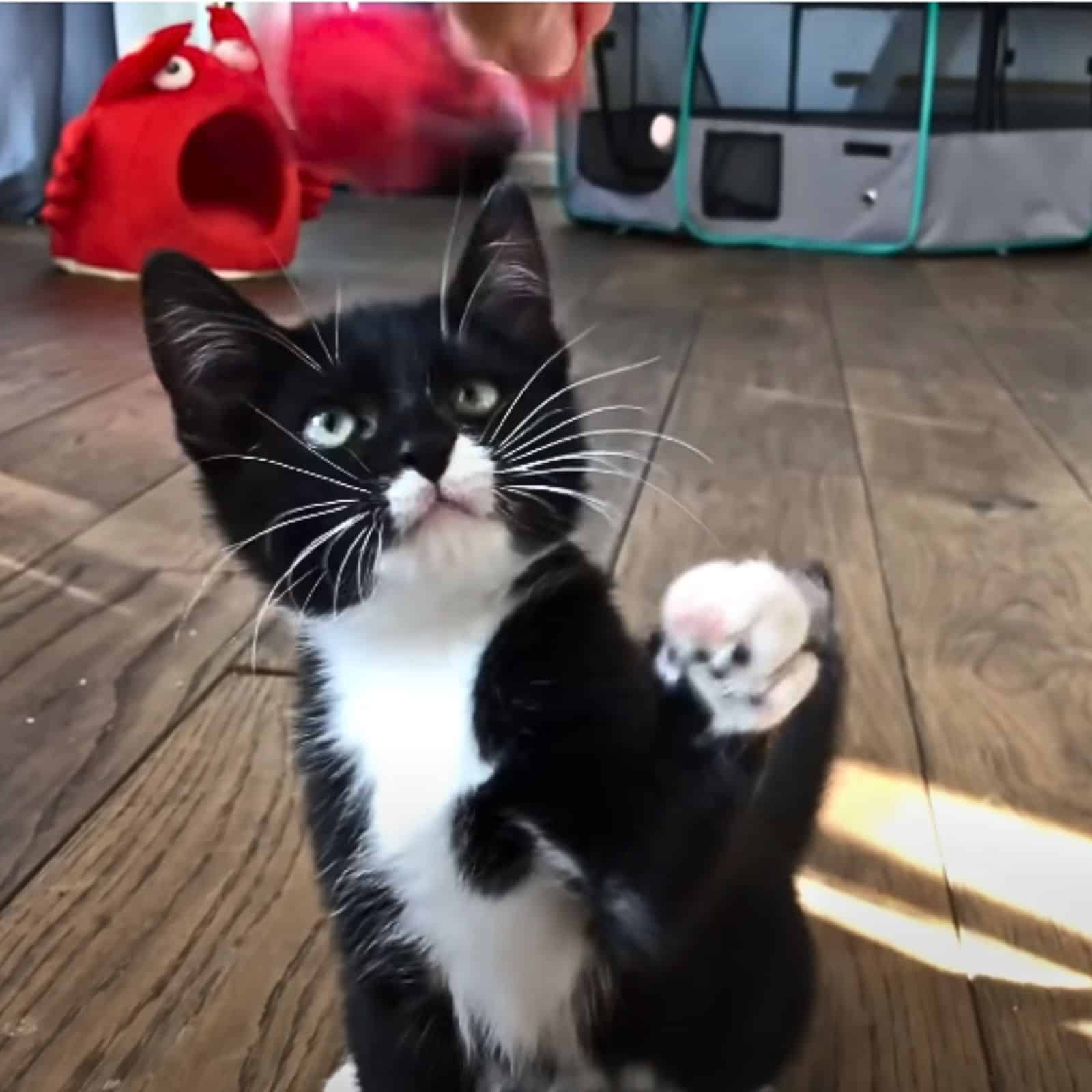
And finally, once you and your kitten become best cuddle buddies, you should start to slowly encourage playtime.
Shaking a vibrant toy for a feral kitten that just arrived in your home might be too scary, but after you’ve taken all the steps above, your kitten should begin to show the curious and playful side all kittens naturally possess.
Make sure you’re still very gentle and not overly loud. Your goal should be to build confidence in your fluff, and not make them fear your next move. Don’t be forceful with your cat, as they need to know you’re safe and mean no harm.
In summary

I hope you’ve enjoyed this article and found these 11 steps more than useful. I know I did! Being a cat rescuer myself, I’ve enjoyed the knowledge Hannah so selflessly shared with us.
To wrap it all up, here are some dos and don’ts to keep in mind for your next feral kitten socialization:
Dos:
• Attest the kitten socialization window
• Keep the kitten in a confined space, like a playpen or dog crate
• Be present during designated meal times
• Introduce one experiment at a time; don’t do all these steps at once
• Respect your kitty’s emotions; if they’re feeling distressed, don’t push them
• Use protective gloves (if needed)

Don’ts:
• Force socialization if your kitten is 12 weeks or older
• Let your feral kitten freely roam your home
• Leave them alone during mealtimes
• Force all experiments at the same time
• Corner them
• Use bare hands






